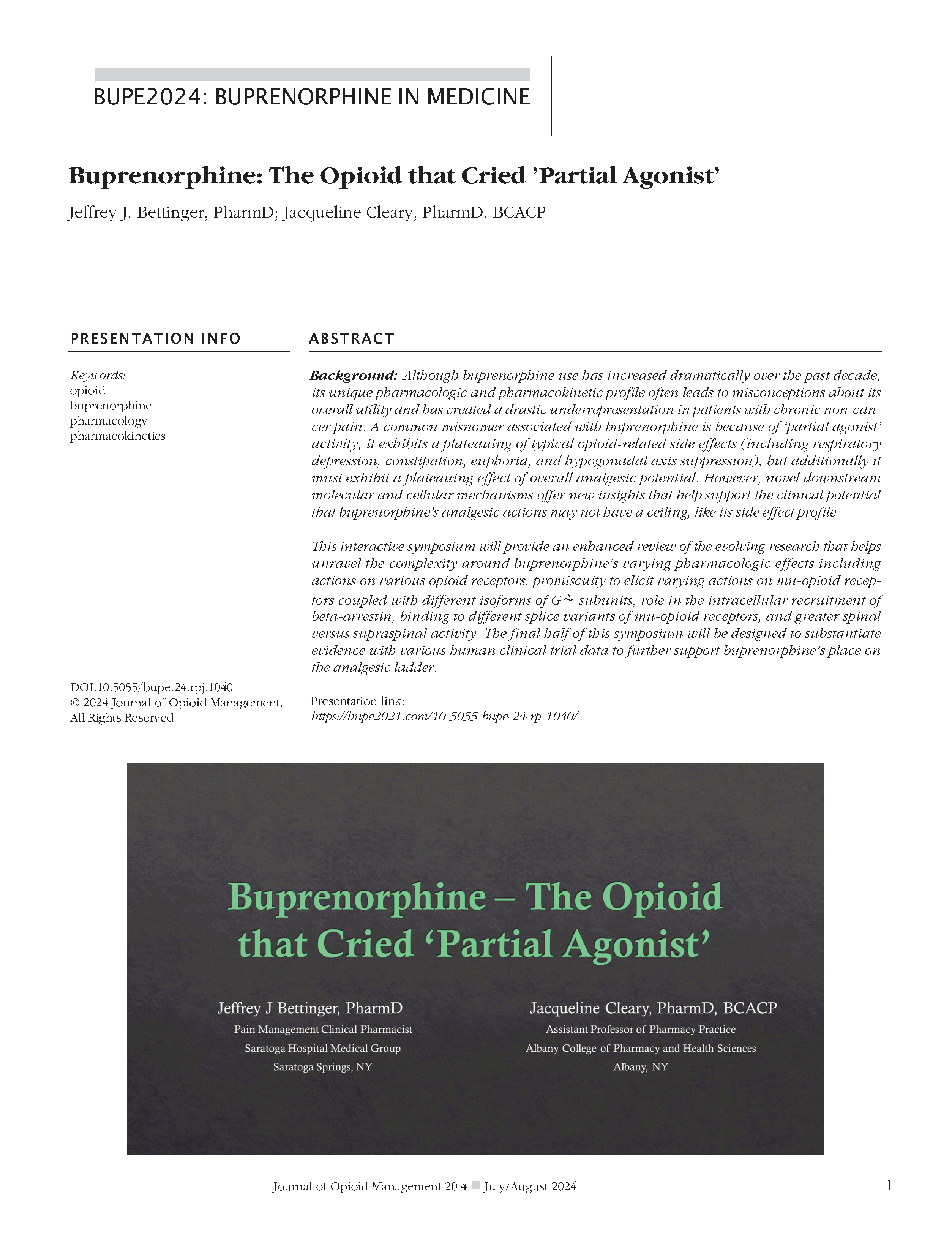Buprenorphine: The Opioid that Cried 'Partial Agonist'
DOI:
https://doi.org/10.5055/bupe.24.rpj.1040Keywords:
opioid, buprenorphine, pharmacology, pharmacokineticsAbstract
Background: Although buprenorphine use has increased dramatically over the past decade, its unique pharmacologic and pharmacokinetic profile often leads to misconceptions about its overall utility and has created a drastic underrepresentation in patients with chronic non-cancer pain. A common misnomer associated with buprenorphine is because of ‘partial agonist’ activity, it exhibits a plateauing of typical opioid-related side effects (including respiratory depression, constipation, euphoria, and hypogonadal axis suppression), but additionally it must exhibit a plateauing effect of overall analgesic potential. However, novel downstream molecular and cellular mechanisms offer new insights that help support the clinical potential that buprenorphine’s analgesic actions may not have a ceiling, like its side effect profile. This interactive symposium will provide an enhanced review of the evolving research that helps unravel the complexity around buprenorphine’s varying pharmacologic effects including actions on various opioid receptors, promiscuity to elicit varying actions on mu-opioid receptors coupled with different isoforms of G~ subunits, role in the intracellular recruitment of beta-arrestin, binding to different splice variants of mu-opioid receptors, and greater spinal versus supraspinal activity. The final half of this symposium will be designed to substantiate evidence with various human clinical trial data to further support buprenorphine’s place on the analgesic ladder.

Downloads
Published
How to Cite
Issue
Section
License
Copyright 2005-2025, Weston Medical Publishing, LLC and Journal of Opioid Management. All Rights Reserved.










